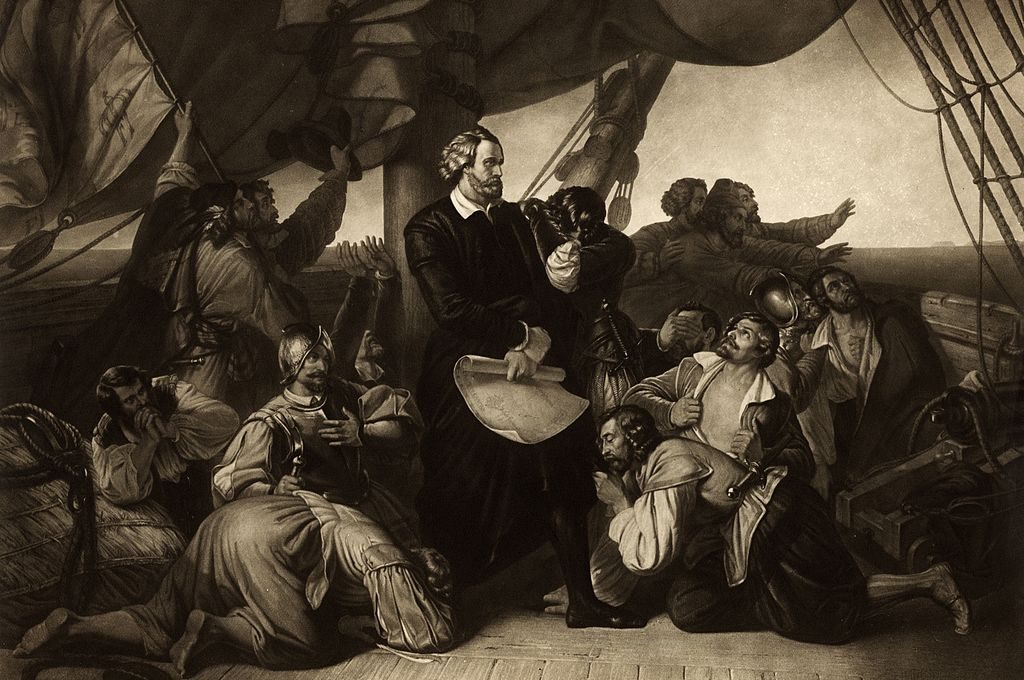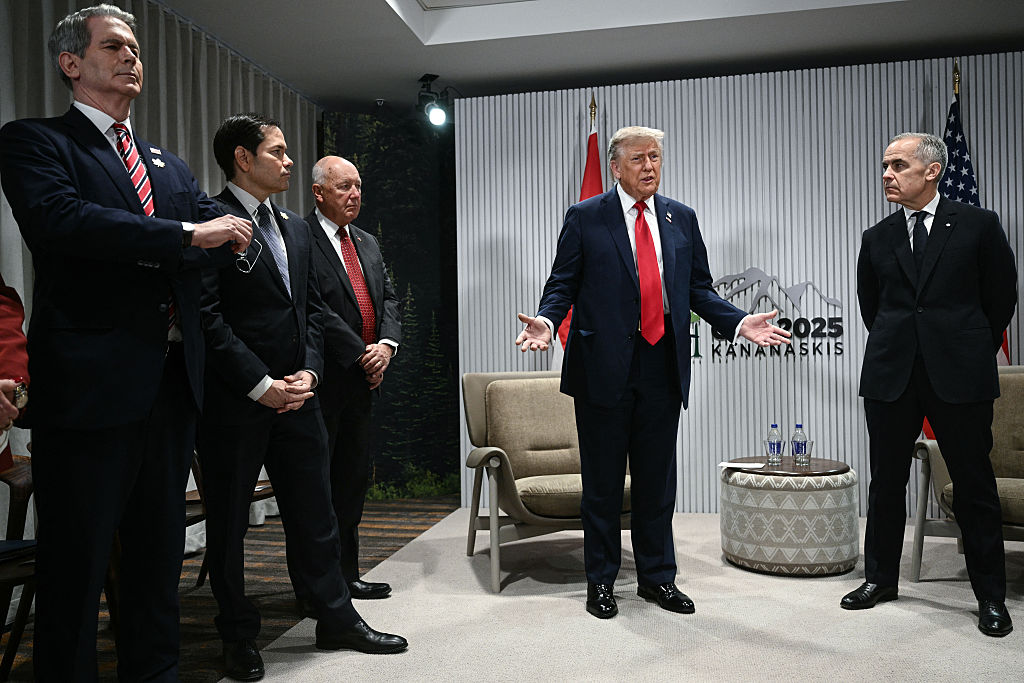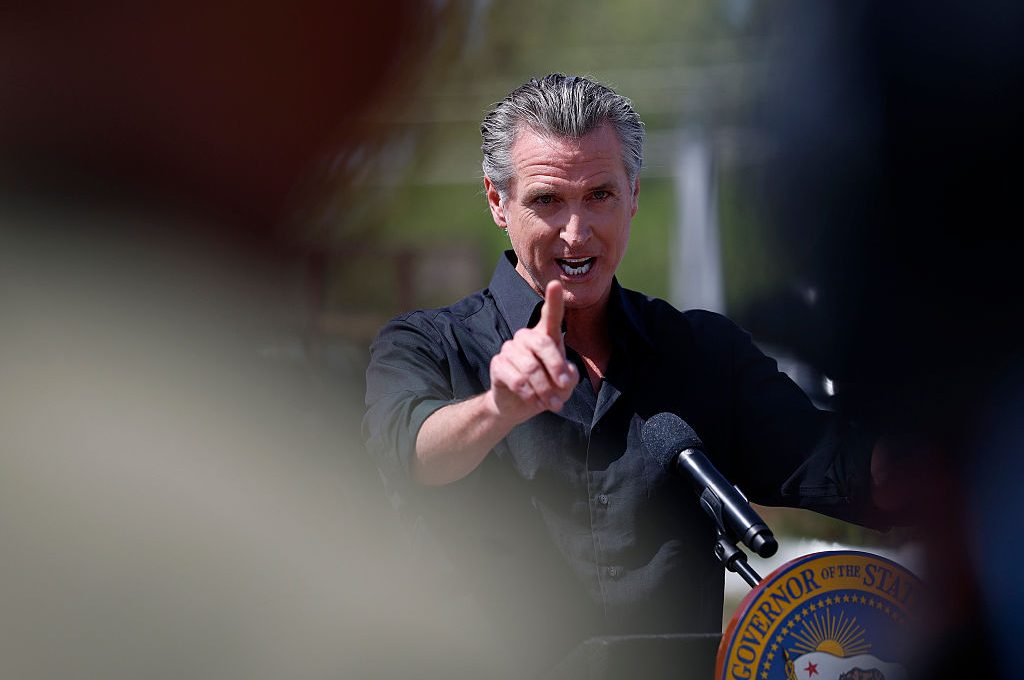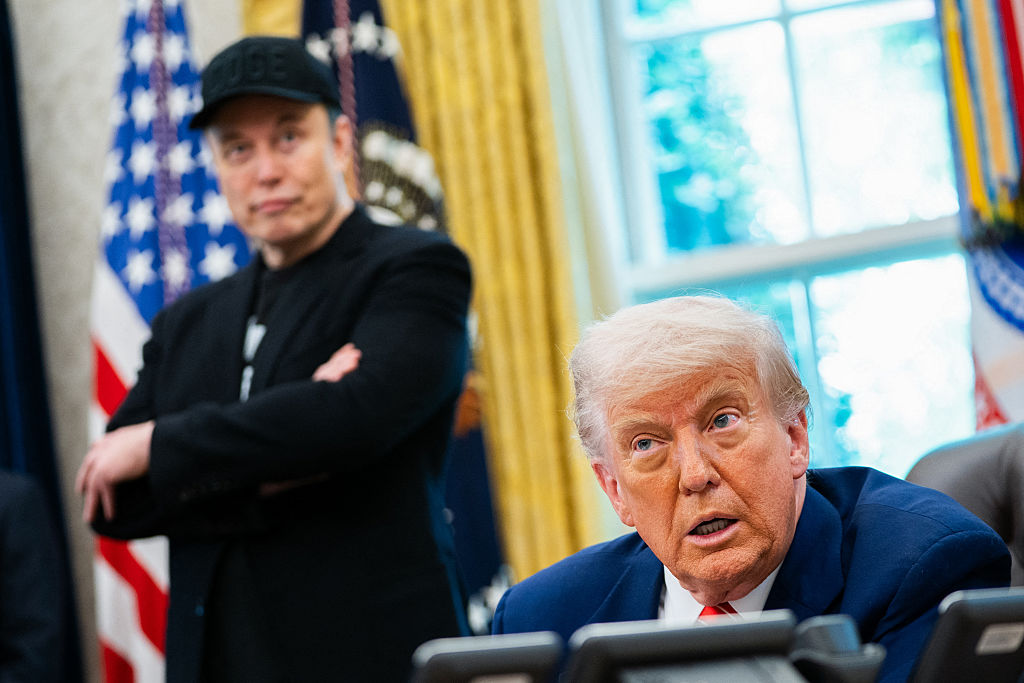Shortly before the coronation of Charles III, a group of indigenous leaders from around the Commonwealth released a statement. They called on the King “to acknowledge the horrific impacts on and legacy of genocide and colonization of the indigenous and enslaved peoples,” including “the oppression of our peoples, plundering of our resources, (and) denigration of our culture.” Charles was told to “redistribute the wealth that underpins the crown back to the peoples from whom it was stolen.” Yet the argument that Britain should pony up for its historical sins is based on a number of rickety assumptions.
One of these is that a substantial portion of the wealth of the UK, or the British Crown, derives from slavery or colonial exploitation. Famously, empire often cost more than it brought in. And, like the rest of northwest Europe, the UK was already wealthy before colonialism or the slave trade. Western Europe would have remained rich even in the absence of overseas adventurism. Germany, for example, was one of the world’s richest areas, long before it gained any colonies. It’s true that overseas resources were exploited; but this was not the sole source of Europe’s wealth. Far from it.
Even more questionable than the call for reparations are the claims of “genocide” in the context of New World colonialism. Until a few years ago, only a tiny fringe of historians believed that European colonialism in the New World was “genocidal.” In the six-volume, 3,000+ page Cambridge History of the Native Peoples of the Americas (published 1996-2000) several dozen specialists saw fit to mention genocide precisely twice. In both of these instances, the scholars in question do so only to reiterate that it did not apply.
There are many reasons why historians long shied away from using the term “genocide.” There was a recognition that the word should be reserved only for extreme cases, such as the Nazis’ attempt to eliminate Europe’s Jews. Using the word to describe the activities of European colonizers and their respective governments surely falls short of this, because the elimination of native populations was seldom — if ever — a deliberate or sustained policy.
There are many reasons why historians long shied away from using the term ‘genocide’
The Spanish government, for example, went to great lengths to protect natives. In 1542, it passed the “New Laws of the Indies for the Good Treatment and Preservation of the Indians.” It also established self-governing Republicas de Indios, where Europeans were not allowed to own land. All of this was done with the purpose of increasing Indian population levels — and, by all accounts, it worked: native population levels began to recover soon after. Even when policies came closest to something we would recognize as “genocidal,” as during the American Trail of Tears debacle, context reveals a host of reasons why, even here, historians have been reluctant to use this term.
Native casualty rates across the New World were too low to justify calling what happened a “genocide.” In the United States, where the native population might have approached 2,000,000 individuals prior to Christopher Columbus’s arrival, widely-accepted tallies show that the total number of natives massacred by whites prior to 1848 amounted to less than 8,000 individuals. Since populations renew themselves every generation, the total number of natives who were born, lived, and died in the territory of the United States between 1500 and 1900 was likely over 10 million.No matter how you do the math, the number of natives who died by massacre was far less than 1 percent of the population. Clearly any incidents like this were appalling, but such killings fall short of genocide.
In recent years, the study of history has become increasingly politicized. Claims of genocide across the New World have subsequently emerged — but these are riddled with demographic exaggerations. New Left darling Howard Zinn acknowledged that Hispaniola, the island where Columbus first landed in 1492, likely had about 250,000 people. However one academic dyad, named Sherburne F. Cook and Woodrow Borah, infamously posited the absurd number of 8 million. This figure has since been taken up by those who wish to maximize the apparent damage done by Europeans to the New World. A historian named David L. Stannard, in his widely-cited book American Holocaust used this figure to suggest that what happened to the natives on Hispaniola was “the equivalent of fifty Hiroshimas.” Logic dictates, however, that the true population figure on Hispaniola in 1491 must have been far lower than 1 million, let alone 7 or 8 million. The island is only about 60 percent the size of England and the population of England in 1491 was likely about 2 million. England in 1500 had one of the most advanced agricultural regimes on Earth. Hispaniola, by contrast, remained mostly forested; as a result, the land would have been able to sustain a much smaller number of people. Genetic studies have suggested that Hispaniola only had “a few tens of thousands” of people in 1491. All evidence therefore suggests that Stannard’s “fifty Hiroshimas” figure is a wild exaggeration.
Claims of “genocide” are even harder to justify when you consider that the major population nuclei of Columbus’s day have survived and thrived into the present. In 1491, the New World held only about 10 percent as many people as the Old World. Central Mexico and environs held roughly 50 percent of the entire New World population, and greater Peru held another 25 percent. By contrast, most of the future United States and Canada were thinly populated, and were home to only about 10 percent of the New World population. In all of the modern-day countries corresponding to pre-Columbian population nucleii — including Mexico, Guatemala, Honduras, Peru, Bolivia, Ecuador, etc. — the population remains more than 80 percent mixed-race or indigenous, and less than 20 percent European.
Most of these people died hundreds of miles from any European
If Europeans set foot in the New World with the aim of replacing indigenous people with European stock via the doctrine of “settler colonialism,” they appear to have failed rather miserably. Recent genetic studies have revealed Mexico to be one of the most genetically diverse countries in the world. The survival of over sixty indigenous languages in Mexico also makes it difficult to argue that Spanish attempts at cultural genocide were as devastating as some pundits suggest. In fact, historians recognize that much of the indigenous cultural suppression in Mexico occurred in the nineteenth century, after the country became independent.
It is universally acknowledged (even by Stannard) that the vast majority of natives who did die after contact died of disease, rather than massacre or abuse. Most of these people died hundreds of miles from any European, and so claims of smallpox-blanket-spreading have been circulated in a disingenuous effort to make Europeans look culpable for a natural biological process over which they had no control.
Such claims of biological warfare are widely believed but have almost no basis in fact. According to the historians Paul Kelton and Philip Ranlet, the single unambiguously recorded instance of an attempt to spread smallpox to Native Americans via contaminated blankets or clothing occurred in the vicinity of Fort Pitt in 1763. What’s more, the commanders in question (Jeffery Amherst and Henry Bouquet), are on record as saying that this might not be a great idea — not only because it was dishonorable, but because it might result in the spreading of smallpox to their own troops.
Rather than spreading smallpox on purpose, as soon as they did gain a modicum of control over this and other diseases, Europeans actually set about protecting native populations against them. The United States, Spain, the United Kingdom and other New World governments spent the majority of the nineteenth century funding vaccination programs — vaccination programs which are seldom researched by modern historians, but which eventually reached hundreds of thousands of individuals. This saved far more native lives than Europeans are accused of massacring during the same century.
These programs were inaugurated as soon as relevant medical advancements were made. Edward Jenner perfected a smallpox vaccine in 1796, improving on an earlier technique known as variolation. Jenner was personally moved by the plight of the indigenous Americans, and in 1807 corresponded with the Chief of the Five Nations in an effort to facilitate vaccination among his people. He received a letter of thanks from the chief for his assistance in “driving the fatal enemy of [our] tribes from the Earth.”
In the United States, Thomas Jefferson arranged to have the vaccine sent west with Louis and Clark, with the hope it could induce Indians to get themselves vaccinated in greater numbers in the future. Andrew Jackson, the same president accused of genocide for the Trail of Tears debacle, is also responsible for the Indian Vaccination Act of 1832. Not to be outdone, the Spanish government had, by 1803, sent Dr. D. Francisco Xavier de Balmis to oversee the vaccination of the native population of the Spanish New World. De Balmis later reported that he had vaccinated some 50,000 natives in Peru alone, and established vaccination programs as far north as Sonora.
The myth of New World genocide is a novel take on European colonialism that almost no historian agreed with prior to 2010. Originally propagated by a handful of left-leaning academic radicals, it has recently moved into the mainstream, despite the fact that the evidence has barely changed. This crisis of historical understanding is, in turn, being taken advantage of by a handful of people, who stand to profit enormously from a sense of public shame based on these historical misconceptions.
In order to ground this debate in reality once more, we must stop imagining that “native leaders” are somehow unimpeachable. We must further shed the illusion that native leaders all think the same thing, simply because they are “natives.” In reality, native leaders hold a wide spectrum of political beliefs, and they are just as fallible, and liable to political machinations, as anyone else. The group who signed the petition to Charles III represent a tiny minority of the most vocally antagonistic such leaders, yearning for a bit of publicity. It is a serious mistake to take theirs as a representative opinion.
Furthermore, those native leaders who insist on obviously political and potentially damaging courses of action — such as massive reparations payments, or the repatriation of artifacts that were only saved from oblivion by the stable institutions of certain Western countries — must expect to be held to account. Many of the artifacts held in British museums, for example, were sold by indigenous elites to British explorers. How, precisely, does this constitute “plunder?” In the present academic climate, genuine scrutiny is nearly impossible. Some are taking advantage of this as a once-in-a-lifetime opportunity to draw untold riches from the public purse towards themselves and their allies, before the “woke” zeitgeist is finally put to rest.
Those who call for reparations often base their arguments on the writings of politically-motivated genocide scholars. These (mostly white, comfortably middle-class) individuals might imagine they are helping modern-day victims of “systemic racism.” But such stories of perpetual victimization are likely to do more harm than good to modern native populations: they might well encourage native youth to drop out of mainstream society in despair, rather than participate in it with an aim to self-improvement. Generations of Native Americans, for example, have turned their peoples’ warrior traditions into a career in the US military — but will this proud tradition continue under the current social climate? As long as only one side is allowed to air their views of native history, then the real, potentially lifesaving data about the true causes of modern native social ills will be submerged — to the detriment of the very people those on the left claim to be defending.
Instead of helping the victims of past genocides, self-appointed genocide scholars are, in some cases, inadvertently facilitating real-world, real-time crackdowns. They do this, in part, by bolstering autocratic leaders’ confidence that the West’s moral posturing is hypocrisy of the highest order — which is music to their autocratic ears. Despots, in turn, broadcast the hyperbole churned out by genocide scholars because its veneer of academic rigor lends it credence as propaganda. This can be used to convince subject populations that democracy is a sham.
According to an article called “The American Genocide of the Indians — Historical Facts and Real Evidence,” posted to the website of the Ministry of Foreign Affairs of the People’s Republic of China:
“Peter Burnett, the first governor of California, proposed a war of extermination against Native Americans, triggering rising calls for the extermination of Indians in the state… From 1846 to 1873, the Indian population in California dropped to 30,000 from 150,000. Countless Indians died as a result of the atrocities.“
What happened to the California natives from the later 1840s was undoubtedly one of the most shameful incidents in US history. But the true death toll by massacre in California was less than a tenth of what is alleged here. One does not need to look far to deduce from whence the Chinese authorities plucked this idea: it is likely taken from Benjamin Madley’s 2016 book An American Genocide. This book makes unprecedented claims about genocide in California, but American award presenters have been falling over themselves to festoon it.
It is vital then that historians robustly challenge novel write-ups that claim “genocide,” where no historian saw them before. For this to happen, both the historical establishment at large, and the university administrators who appoint historians to their posts, must actively guarantee researchers full freedom to challenge these novel interpretations. One wonders how genocide scholars can feel proud of their accomplishments, when they know that no practicing historian would dare to criticize their arguments in a robust manner. Without the possibility of valid criticism, science becomes impossible, and “proofs” become nothing more than dogma dressed up in clever words.
If we manage to restore a modicum of balance to historical discussions of colonialism and European genocide, we will quickly realize that much of what is currently being claimed is exaggerated, and that the opinion of the majority of historians prior to 2010 or so is closer to the truth. Until then, we can expect to be bombarded with opportunist claims for artifact repatriation, reparations and official apologies. And we can expect that many of our greatest institutions — institutions that have done an unprecedented amount of good for all of humanity, such as when the British monarchy repeatedly helped to end the scourge of global slavery — will continue to be pelted with rhetorical rubbish.
This article was originally published on The Spectator’s UK website.

























